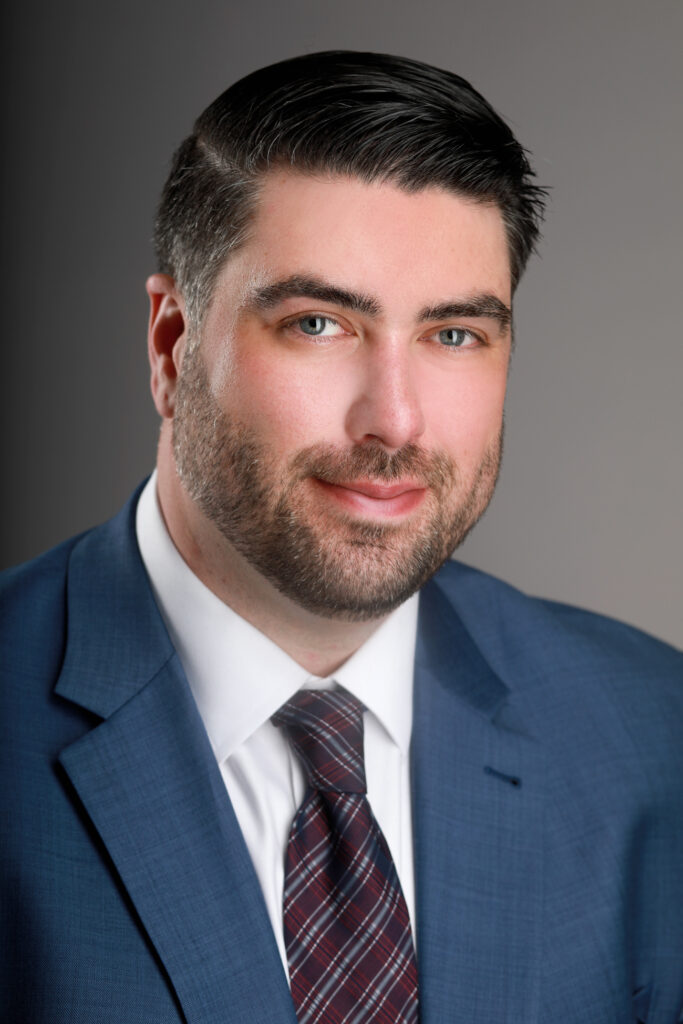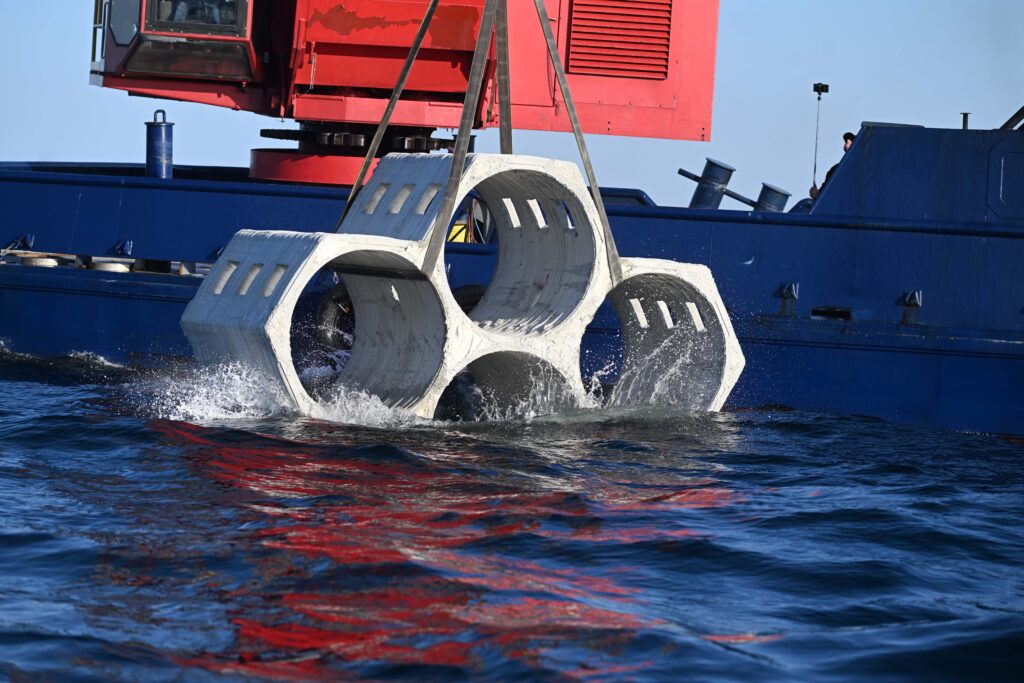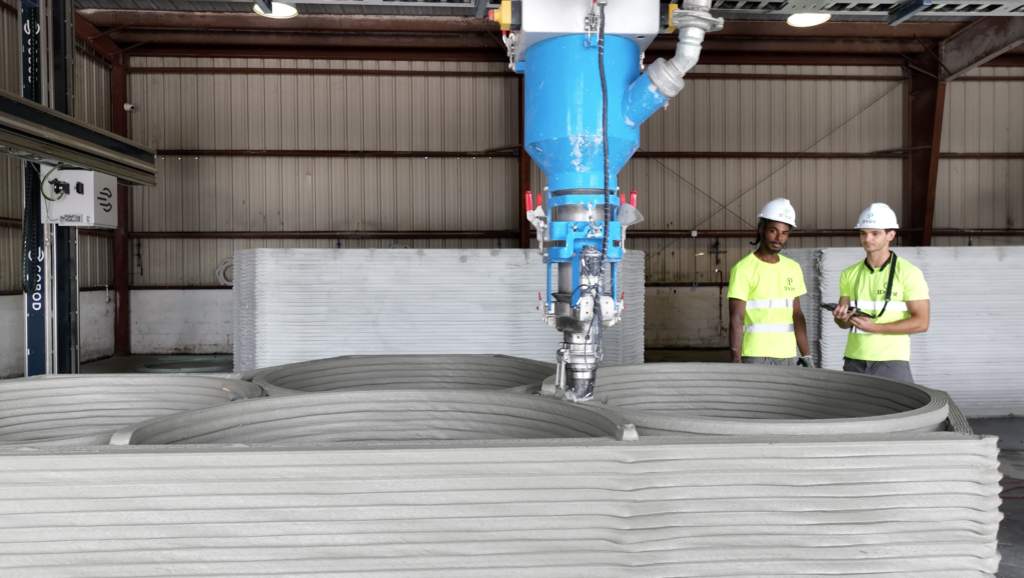By Naomi von Bose, FAU Center for Environmental Studies
The following Q&A was conducted with Adam Friedman, co-founder of 1Print. Based in Pompano Beach, the 3D concrete-printing company creates artificial reefs and seawalls that integrate habitats for marine life. This interview has been edited for length and clarity.
What benefits does your company’s work provide in addressing climate-related problems such as sea-level rise?

At 1Print, we have the benefit of customizing geometry that benefits the environment to address climate-related issues. This is achievable through our 3D printing technology. One shape does not fit all, so flexibility is essential. We work with local coastal engineers and deployment teams to identify the best solutions for the area’s needs.
Regarding sea-level rise, we can customize seawalls, breakwaters and jetties to disperse waves, facilitating swift vertical construction atop existing seawalls that redirect wave energy back to the sea.
What benefits does your technology offer to communities in Florida in terms of enhancing resilience against hurricanes or extreme weather?
We work with the University of Miami and their SEAHIVE product. This has been demonstrated in models and pilots to mitigate and break down wave energy, slowing it down before reaching the coast. This reduces damage to coastal communities and their existing sea walls.
SEAHIVE technology also allows it to complement sea walls produced by 1Print on a mass scale. Ultimately, this protects communities by creating more resilient coastal protection barriers.
What advantages does your process have over previously used methods for creating seawalls, artificial reefs and other coastal infrastructure?

At 1Print, we have specific processes in place. Some of them are protected by provisional patents that allow us to rapidly 3D print very advanced shapes. These can only be produced occasionally.
Previously, concrete had to be cast, either in place or pre-cast and then delivered to the site. 1Print can do both. We can create the cast in place, and we can also print off-site and deliver modular units that can be used as seawalls, artificial reefs or breakwaters in many different instances. So, we are highly customizable.
As stated before, this is important because many different geographies or cases require specific geometries per that area’s needs, whether structurally or habitat.
What environmental benefits do the seawalls and artificial reefs produced by your company provide for aquatic life and the marine ecosystem?
We are green-gray infrastructure company. We use nature-based solutions within our structures, meaning we promote the growth of mangroves, corals, oysters, grasses and fish habitat. This is very important because these structures — whether it’s mangroves, oysters or corals — have been shown through the SEAHIVE and other supplementary projects that you have structural benefits in slowing down waves.
Can you specify what green-gray infrastructure is?
1Print is a green-gray infrastructure company, which means the gray is the concrete that we work with. We extrude our concrete via our 3D-printing robotic mechanisms, and with everything we produce we have a habitat creation in mind, which is our green component.
When we’re producing an item, it’s not just, “Hey, can this stop the waves?” It’s, “Hey, can this stop the waves and grow corals on it and grow mangroves or oysters on it and create an environment for fish to thrive.” So, we always keep that green component in mind when we are engineering the gray components.
Could you explain a bit about the carbon-capturing technique your product has?
We work with a local company called Carbon Limit, and they work with Titan Cement, Titan America, to produce a material for us to 3D print.
First of all, the material that we use is U.S. Army Corps of Engineers marine-grade material, which has certain specification for different strengths. We meet and exceed that by also adding the Carbon Limit CaptureCrete product in to our material, which take carbon from the atmosphere and mineralizes it.
What are some future plans for your company?
The future plans for our company are to be able to create products and solutions that can be scaled around the country and around the world.
Which sectors will play a crucial role in enhancing the effectiveness of this product or technology?

So when it comes to the manufacturing side, jobs that deal with the mechanics of advanced robotics like the 3D printers, also the advanced materials that we exclude out of our 3D printers, and then the advanced design and structural needs that are needed for when we actually design products. So many different engineering fields, but also on the actual creation of these broad projects, we need boots on the ground for when we’re either producing them or designing them.
When it comes to our partners, there are many jobs created, whether it’s in the ecological realm but also materials and deployments. So, deployment or installing, there are many jobs that are needed. These think out on the barge or a construction job that are placing these projects down to their final resting place.
It’s important, once they’re placed, that we’re working with the universities and certain government agencies to monitor and to show that there is success. Whether it’s success in protecting the coasts or success in creating habitat.
Is there anything else you would want to say to the public?
For Floridians know that there’s a company dedicating all that they have to protect them, communities, families and businesses. And through individuals who might want to get involved with us, we’re always looking, hiring, scaling and seeking partners to open up locations in different parts of Florida in which we can provide the technology, and know-how on how to produce and deploy these projects.
This piece was written by Naomi von Bose, a graduate research assistant for FAU’s Center for Environmental Studies. The Center manages The Invading Sea and the FAU Charles E. Schmidt College of Science provides financial support. FAU is part of the ClimateReady Tech Hub and the center’s director, Colin Polsky, chairs the Hub’s Climate Tech Committee.
Friedman and 1Print are also part of the Hub. Watch a video below of him discussing the Hub’s benefits for businesses such as 1Print.
Sign up for The Invading Sea newsletter by visiting here. If you are interested in submitting an opinion piece to The Invading Sea, email Editor Nathan Crabbe at ncrabbe@fau.edu.



